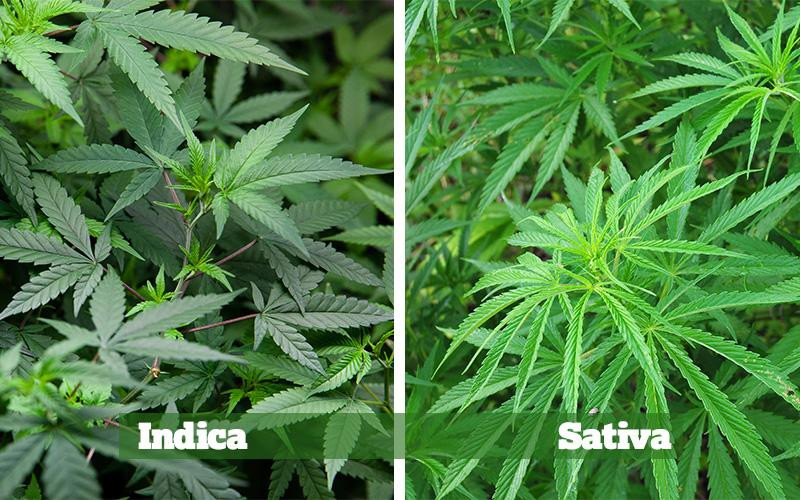Geen categorie
CHOOSING STRAINS; SATIVA OR INDICA..
Choosing Strains; Sativa vs Indica
How to shop for cannabis without saying ‘indica’ or ‘sativa’
When browsing cannabis strains, you may notice strains are commonly broken up into three distinct groups: indica, sativa, and hybrid. Most consumers have used two of these three cannabis types (indica and sativa) as a standard for predicting effects. This belief that indicas, sativas, and hybrids deliver distinct effects is so deeply rooted in mainstream cannabis culture that budtenders typically begin their strain recommendations by asking you which of these three types you prefer. But if you look at the chemical “ingredients” inside of indicas and sativas – that is, terpenes and cannabinoids (more on that below) – you’ll notice there aren’t clear patterns to explain why one type would be inherently sedating and the other uplifting. We know that indica and sativa cannabis strains can look differently, but this distinction is primarily only useful to cannabis growers.
Indica vs. sativa effects: What does the research say?
The indica, sativa and hybrid system is no doubt convenient, especially when first entering the vast and overwhelming world of cannabis. With so many new strains and products to choose from, where else are we to begin? A more useful starting point when thinking about the effects of strains would be cannabinoids and terpenes, two words you should put into your back pocket if you haven’t already. Cannabis science (!) says this about the division of strains;
“The way that sativa and indica labels are utilized in commerce is nonsense. The clinical effects of the cannabis chemovar have nothing to do with whether the plant is tall and sparse vs short and bushy, or whether the leaflets are narrow or broad.”
What this means is not all sativas will energize you, and not all indicas will sedate you. You may notice a tendency for so-called sativas to be uplifting or indicas to be relaxing, especially when we expect to feel one way or the other. Just note that there is no hard-and-fast rule and chemical data doesn’t reflect a clear pattern.
If Indica and Sativa aren’t predictive of effects, then what is?
The effects of different strains of weed depend on a number of different factors, including the product’s chemical profile, your unique biological tolerance, dosage and consumption method. It also depends on the cannabinoid profile and terpenes of the strain. If you understand how each of these factors change the experience, you’ll have the best chance of finding a strain that is perfect for you.
**Cannabinoids
The cannabis plant is composed of hundreds of chemical compounds that create a unique harmony of effects, which is primarily led by cannabinoids and terpenes. Cannabinoids like THC and CBD (the two most common) are the main drivers of cannabis’ therapeutic and recreational effects. How much experience do you have with cannabis? If your tolerance is low, consider a low-THC strain in low doses. Are you susceptible to anxiety or other side effects of THC? If so, try a strain high in CBD. However, if you’re still searching for that ideal strain, these are important details to keep in mind.
Cannabis is a personal experience, and how you select it is, too. Understanding its nuances should help give you an alternative perspective on what qualities to look for in a strain. Some of you are happy to sit down with any strain, any time, and that’s okay. For others, this level of precision in strain selection is key to having a good experience—and feeling good is what cannabis is all about.
**Terpenes
If you’ve ever used aromatherapy to relax or invigorate your mind and body, you understand the basics of terpenes. Terpenes are aromatic compounds commonly produced by plants and fruit. They can be found in lavender flowers, oranges, hops, pepper, and of course, cannabis. Secreted by the same glands that ooze THC and CBD, terpenes are what make cannabis smell like berries, citrus, pine, fuel, etc. One question yet to be answered by research is how terpenes- and different combinations of those terpenes – shape the effects of different cannabis strains. There are many types of terpenes found in cannabis, and it’s worth familiarizing yourself with the most common terpenes—especially myrcene, caryophyllene, limonene, and terpinolene, since they’re the most likely to occur in pronounced levels in cannabis.
How to shop for cannabis without saying ‘indica’ or ‘sativa’
What’s important to you as a cannabis consumer shopping for a specific mood has everything to do with potency, dose, and chemical profile (i.e., cannabinoids and terpenes). That’s the beauty of the new Super Strains Seed Guide we are currently working on – it allows you to easily identify which strains are chemically similar, so you have a better chance of finding (or avoiding) particular chemical profiles. Let’s say you’re prone to anxiety and looking to avoid an uncomfortable experience. If you discard sativas for that reason because they make you anxious, you may be lured into the trap of another THC powerhouse like Enemy of the state – because it’s not a sativa. Meanwhile, a “sativa” like Saga – with low levels of THC and high levels of CBD – might actually be a better fit.
Although it isn’t as simple as grouping strains into the indica-sativa-hybrid triumvirate that has long been our compass while navigating menus, try using potency to guide you. You may find that a strain packing 25% THC isn’t as enjoyable as that very fragrant strain tapping in at 16%. You might also find that you gravitate toward strains that express similar terpene profiles. For example, if you like the terpinolene-dominant Enemy of the state, you’ll likely enjoy La Jefe or La cucaracha, which are also terpinolene-dominant. Finding the right strain for you requires a bit of trial and error. Still, if you’re new to cannabis, there are no better places to start your search for that perfect experience.




